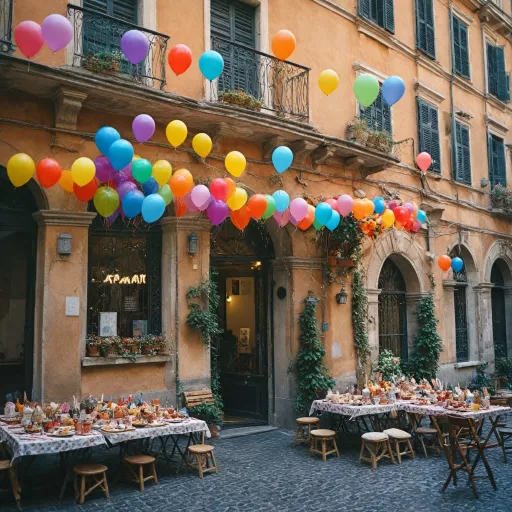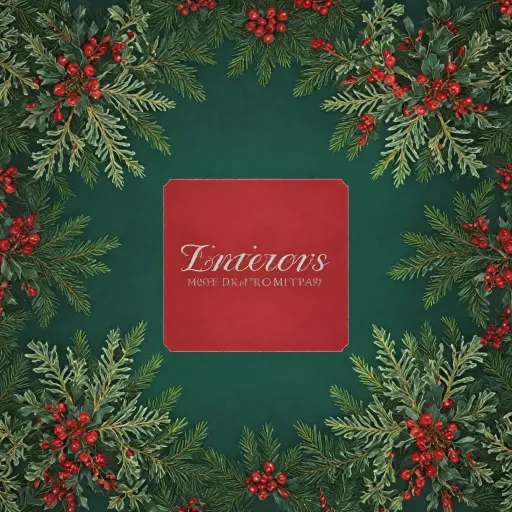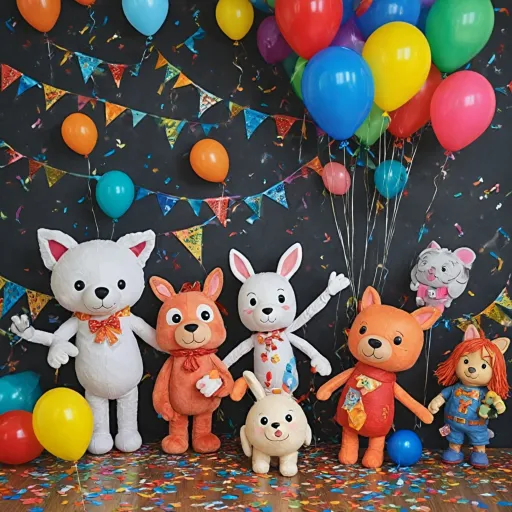
Understanding the Importance of Language in Christmas Wishes
The Role of Language in Conveying Holiday Spirit
Language plays a pivotal role in expressing emotions and cultural significance during the holiday season. In Spanish-speaking countries, Christmas is not just a holiday but a deeply rooted tradition celebrated with fervor and unity. Understanding and using the appropriate Spanish vocabulary for Christmas can elevate your festive greetings and demonstrate a genuine appreciation for cultural nuances. Spanish, like many languages, has its own unique set of Christmas words that enrich your greeting experience. During this season, you might hear and use terms like "Feliz Navidad" (Merry Christmas), "los Reyes Magos" (the Wise Men), and "arbol de Navidad" (Christmas tree), each carrying its symbolisms and traditions. Mastering these phrases helps encapsulate the spirit of Navidad. Integrating such vocabulary into your Christmas wishes can add depth and resonance to your greetings, bridging cultural gaps and promoting inclusivity. They're more than just words; they embody warmth, joy, and the spirit of Santa Claus and the holiday. To enhance your holiday greetings, you might consider utilizing tools like Christmas boxed cards that can beautifully capture these sentiments. Check out this resource on how to enhance your holiday greetings with Christmas boxed cards for tips and inspiration. By combining visual elements with well-chosen words, you can create memorable festive wishes that resonate with the recipient.Common Spanish Words Used in Christmas Greetings
Essential Vocabulary for Festive Cheer
The holiday season is filled with joy, and using the right words can help convey that spirit in your Christmas greetings. When exploring Spanish words for Navidad, you'll find that these phrases are more than mere translations; they are a reflection of cultural traditions and warmth unique to Spanish-speaking countries.
Feliz Navidad is perhaps the most recognized phrase, equivalent to 'Merry Christmas' in English. This simple expression encapsulates the festive spirit and is widely used across Spanish-speaking regions to spread holiday cheer. Don’t forget about Próspero Año Nuevo, which means 'Prosperous New Year' and is often paired with Christmas greetings.
Another key word is reyes magos, referring to the 'Three Kings'—a central aspect of festivities within these cultures, particularly during the days leading up to Christmas and New Year's Eve. Additionally, Santa Claus is known as Papá Noel or San Nicolás in Spanish.
The vocabulary of the holiday season is not complete without mentioning the árbol de Navidad, or Christmas tree, and regalos, the gifts that are shared during this time. The phrase Nochebuena denotes Christmas Eve, a time for family gatherings and celebrations.
Understanding these Spanish vocabulary terms helps enhance your interactions during the holidays. As you delve into crafting your own messages, remember that learning Spanish for Christmas greetings opens doors to deeper connections during this festive time.
For more insight on perfecting your festive greetings, check out crafting the perfect invitation wording for Christmas.
Real-Life Examples of Spanish Christmas Wishes
Heartfelt Expressions in Spanish Christmas Greetings
- "Feliz Navidad y Próspero Año Nuevo": A common phrase, this translates to "Merry Christmas and a Prosperous New Year" in English. It's a staple in Spanish-speaking countries during the festive season, blending wishes for both Christmas and the Year Eve.
- "Que la magia de la Navidad llene tu hogar de paz y alegría": This means "May the magic of Christmas fill your home with peace and joy." It's an expression that captures the essence of the Navidad Christmas spirit.
- "Felices Fiestas": Equivalent to "Happy Holidays," it's a versatile phrase used throughout the holiday season, encompassing Christmas Eve and other festivities.
- "Que el Niño Jesús bendiga tu hogar con amor": Translating to "May Baby Jesus bless your home with love," this phrase reflects the religious traditions associated with Navidad.
Using these phrases, expressed with sincere warmth, can make a Spanish Christmas greeting both culturally authentic and warmly received. When crafting your own greetings, embrace local vocabulary and traditions, such as mentioning the Reyes Magos or including elements like the arbol de Navidad (Christmas tree). For more inspiration, consider crafting heartfelt wishes tailored to the cultural context and holiday spirit.
Cultural Nuances in Spanish Christmas Greetings
Cultural Insights into Spanish Christmas Wishing Traditions
The cultural nuances embedded in Spanish Christmas wishes add a richness to the holiday experience that sets them apart from English-speaking traditions. Understanding these cultural elements can help enrich your holiday greetings and deepen your appreciation for this festive time.- Family-Centric Wishes: In Spanish-speaking cultures, the family unit holds a place of utmost importance, especially during the holiday season. Common phrases often revolve around family unity and warmth, such as "Que la felicidad de esta Navidad perdure todo el año en nuestras familias," which translates to "May the happiness of this Christmas last the whole year in our families."
- Religious Undertones: Given that many Spanish-speaking countries have strong Catholic traditions, Christmas wishes frequently include religious themes. Phrases like "Que el Niño Jesús te llene de bendiciones," meaning "May the Baby Jesus fill you with blessings," reflect this spiritual aspect.
- Use of Characters like Santa Claus and Los Reyes Magos: While Santa Claus, or 'Papá Noel', is familiar to many, the tradition of 'Los Reyes Magos' (the Three Wise Men) is particularly significant in Spanish cultures. Wishes such as "Que los Reyes Magos te traigan muchos regalos," or "May the Three Wise Men bring you many gifts," are commonplace.
- Season-Specific Elements: Words like "Nochebuena" (Christmas Eve) and "Navidad" (Christmas) are frequently featured in holiday greetings. A wish such as "Que tengas una Nochebuena mágica" translates to "May you have a magical Christmas Eve."
Tips for Crafting Your Own Spanish Christmas Wishes
Crafting Personalized Spanish Holiday Greetings
To create the perfect Spanish Christmas greeting, start by familiarizing yourself with basic Spanish Christmas vocabulary. Words like 'feliz navidad' (merry Christmas), 'reyes magos' (wise men), and 'arbol navidad' (Christmas tree) are essential. These terms symbolize festive elements celebrated across Spanish-speaking countries during the holiday season. Consider the cultural nuances of Christmas and New Year's Eve when incorporating Spanish phrases into your greetings. This adds authenticity, whether crafting messages for a Christmas card or holiday email. In Spanish cultures, the holiday season extends beyond December 25th, up to January 6th, known as the day of the 'reyes.' Blend traditional greetings with personal touches. Begin with a warm opening like "Queridos amigos y familia" (Dear friends and family), then incorporate holiday wishes using Spanish Christmas words. A simple yet heartfelt example is: "Les deseo una feliz navidad llena de amor y alegría" (I wish you a merry Christmas full of love and joy). For more festive flair, weave in common symbols and activities associated with the Spanish Christmas, such as referring to the 'nochebuena' (Christmas Eve) and referencing beloved traditions like the arrival of 'santa claus' or exchanging 'gifts' under the 'christmas tree.' As you craft these messages, remember that shorter, sincere greetings can have a significant impact. The spirit of the holiday season is often best captured through genuine expressions of care and happiness. Finally, practice and deepen your learning of 'Spanish vocabulary' specific to the festive period. This approach enhances your proficiency while enabling you to engage more genuinely with Spanish-speaking friends or family during the holidays.Challenges in Translating Christmas Wishes
Overcoming the Challenges of Translation in Christmas Wishes
Translating Christmas wishes from English to Spanish, or vice versa, can be a complex task, as language often carries cultural significance beyond simple word-for-word translation. Here's what to consider:- Literal vs. Figurative Language: Some Christmas vocabulary may not have a direct translation. Spanish phrases such as "Feliz Navidad" go beyond "Merry Christmas" to evoke a sense of warmth and celebration. Translators should seek to capture the spirit of the phrase, not just the words themselves.
- Cultural References: Words like "Reyes Magos" (the Three Wise Men) and "Santa Claus" have deep cultural roots in Spanish-speaking countries. Knowing when and how to use these terms is crucial for accurate and respectful communication.
- Nuanced Expressions: Take into account phrases that hold special meaning around the holiday season. For example, the Spanish recognize "Nochebuena," which refers to Christmas Eve, a vital part of the holiday tradition in many Spanish-speaking cultures.
- Adjusting for Context: Just as Christmas traditions vary, so does the language used in various regions. Words Spanish speakers might use can reflect regional customs, making understanding local context invaluable when crafting or translating greetings.













